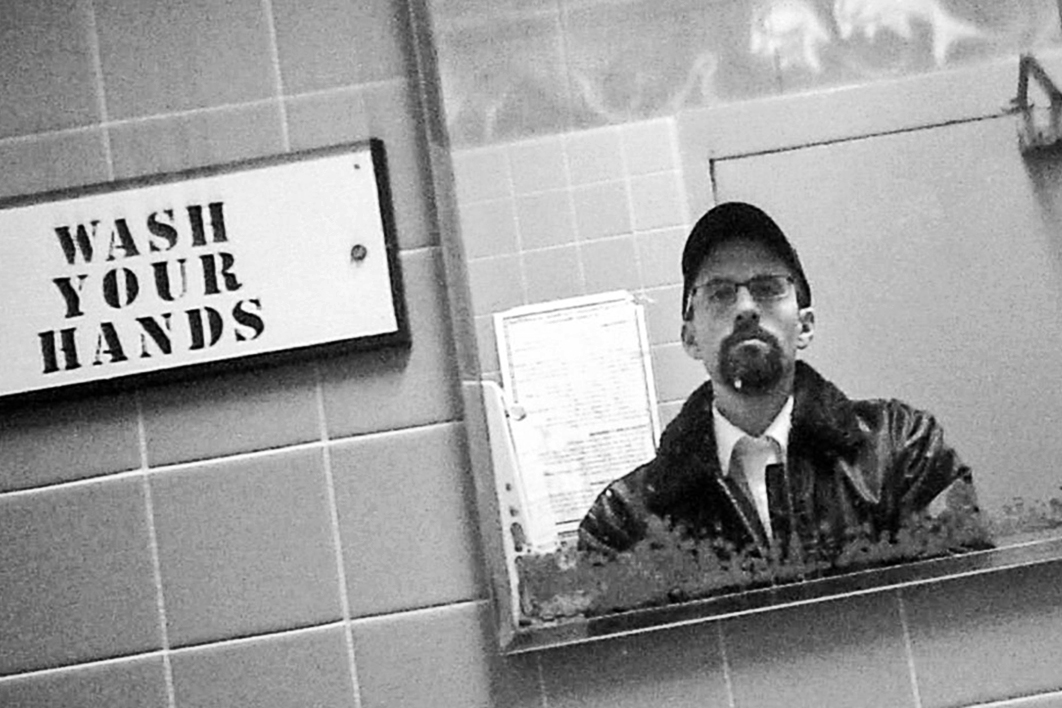American Prison: A Reporter’s Undercover Journey Into the Business of Punishment
by Shane Bauer | The Penguin Press | $49.95 | 351 pages
Shane Bauer’s exposé of the current correctional climate in the United States is fresh and uncompromising. The book reveals the state of imprisonment in a country in which 1.5 million people are behind bars in state and federal prisons. Police lockups (referred to as “jails”) hold a further 700,000 inmates. In all, then, there are 2.2 million prisoners in America, a fivefold increase over the past forty years. Indeed, Bauer remarks that while the United States boasts 5 per cent of the world’s population, it houses nearly a quarter of the world’s prisoners.
The book has been promoted as an exposé of the evils of privatisation — a “blistering indictment of the private prison system and the forces that drive it” — but there is no reason to believe that the conditions described exist only in private facilities. It is not a pretty picture. Indeed, it is a shocking one.
For the purposes of writing the book, Bauer, a long-time freelance journalist, took a job in 2014 as a correctional services officer in a privately run prison, Winn Correctional Center, in Winnfield, Louisiana. His account of his day-to-day work and interactions with its private managers, the Corrections Corporation of America, and their clientele (inmates) makes for compelling reading.
He made a particular point of using his real name when he sought employment (to avoid any suggestion of journalistic subterfuge), in the process highlighting the inadequacies of the company’s screening of applicants for the very stressful and difficult job of managing hundreds of troubled lives. His training was cursory; his pay was $9 an hour.
As it turns out, Shane Bauer is also no stranger to life on the other side of the bars. Attentive readers may recall him as one of the three Westerners who strayed unwittingly into Iran while walking the Iraqi Kurdistan border in 2009. They were arrested and housed in Iran’s Elvin prison for more than two years.
When he resigned from Winn four months later, Bauer’s first task was to write a short article for Mother Jones magazine, a left-leaning periodical widely read across America. It won him a National Magazine Award. This book is the expanded, no-holds-barred version.
Winn was chosen for very good reasons. Not only does Louisiana have one of the highest incarceration rates in the world (1052 prisoners per 100,000 population, compared to Australia’s current figure of around 220), but Winn is the oldest privately operated medium-security prison in the United States.
The real strength of the book is found not so much in the narration of the interactions that occurred between Bauer and those under his control, but in the chapters (every second chapter, as it happens) that describe the development of corrections policy across the United States following the Civil War. When the war began in 1861, the penitentiaries in Louisiana were given the job of manufacturing all manner of military necessities, including carriages, wagons, tents and uniforms. They became the largest single textile producer in the state. (Slave-owners, too, were able to make massive profits from their use of free labour to manufacture the goods required for the war effort.)
When the war ended, and slavery was abolished, there was concern to ensure that the state could continue to find profits in the manufacturing sector. The Thirteenth Amendment to the US Constitution came to the rescue. Slavery had been abolished “except as punishment for a crime.” The penitentiary was resurrected and was turned into the largest factory in the state. The slaves that had been freed were targeted for petty criminality, and now filled the cells again. Bauer describes the appalling conditions of those in captivity over the next century, as their free labour built the massive road, rail, textile and coal industries that became the drivers of US industrial muscle and economic might.
The last part of American Prison tells of the author’s post-Winn experiences: the attempts by Corrections Corporation of America to discredit his work, and the shareholders’ meetings he endeavoured to disrupt. He ventures a look at the political and commercial climate in which privatisation in American corrections now operates. He notes that when Donald Trump was elected in November 2016, and (then) attorney-general Jeff Sessions reversed the Obama-era decision to move away from private prisons, the company’s stock rose 50 per cent.
What is the privatised prison position in Australia today? Nine private prisons are currently operating in this country (two in New South Wales, two in Victoria, two in Queensland, two in Western Australia, and one in South Australia). The first, the Arthur Gorrie Correctional Centre, was established in Brisbane in 1992 on the recommendation of the Commission of Review into Corrective Services in Queensland. Businessman Jim Kennedy, author of the review, believed that privately run prisons could provide services more effectively and cheaply than state-run facilities, and that private prisons would provide a competitive challenge to state prisons if performance measures were properly contracted and operationalised.
Approximately 6400 Australian prisoners are currently housed in privately managed facilities, or around 18 per cent of the current Australian prison population (a percentage that is actually higher than in the United States). The highest percentage is found in Victoria, where around 30 per cent of prisoners are held privately. Management of private facilities in Australia is carried out by three main companies, GEO, G4S and SERCO Australia. In Victoria, for example, the Fulham Correctional Centre is managed by GEO, and Port Phillip Prison by G4S. A third private facility, Deer Park (a women’s prison), was transferred back to the public sector in 2000 following governmental concern about its management. Queensland’s newest prison, the Southern Queensland Correctional Centre, which opened in 2012, is managed by SERCO Australia. The Australian experience of privatisation, while not entirely exemplary, is more positive than the one to be found today in the United States.
Those who challenge the notion of privatised prisons, as Shane Bauer does, argue that private incarceration violates the principles of democratic governance and accountability. The political and humanitarian risks grow, it is said, as the motive of cost reduction (essential for shareholder profits) becomes predominant. And it’s true that there are recurring allegations in Australia of cost cutting, resulting in understaffing, inadequate therapeutic programs, and inadequate security.
By the same token, some commentators note that the modern state has made public–private partnerships a very common (and successful) component of state-run commercial enterprises. Others argue that private prisons can stimulate improvement of the public prison system if the key performance indicators that have been placed in privatised management contracts are applied in the public system as well.
Thus, the picture painted by Shane Bauer of the current US private prison is not one that can be placed into an Australian setting easily. By the same token, it does remind us that vigilance regarding the practices of private operators should remain a key priority of policy-makers. No prison in this country or elsewhere is an easy place to work, or to be housed.
American Prison is a solid read. What is particularly powerful is the author’s verbatim reporting of the often appalling repartee between staff and inmates and among staff members themselves, captured by a hidden microphone. Bauer has made no attempt to censor the dialogue. With most prisoners (and some staff) happy to be named, the text is as authoritative as it is raw. The book is disturbing, but gripping. I couldn’t put it down. •




